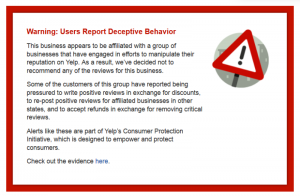Here’s how to make initiative part of your workplace mantra.
Taking initiative is what we do here at Red Branch Media. And with a small team of 15, it’s tough to keep that initiative moving along 100 percent of the time. After all, my team is only human. With over 30 clients globally and some of the biggest brand names in the world on our plates, we have the workload of a much larger company, so it’s not easy for me to keep asking for more. And yet, in order to grow and scale, I must continue to do so.
Here’s how I get my team to give even more of themselves and take initiative on projects that scare even me.
Find the Cause for Lack of Initiative
Perhaps employees feel they have too little time in their day, workers don’t feel qualified to take on a new task or employees are comfortable with their current workload. An overloaded team isn’t going to jump at the chance to do even more work. If the task sounds like something a specific department or person should handle — but that specific person doesn’t speak up — it can be awkward for the rest of your team to respond. And if employees aren’t motivated to do more or are disengaged, then you’ve overlooked opportunities to improve employee morale and engagement. Did you know highly engaged employees are more than three times as likely to go above and beyond what’s expected of them?
Once you’ve identified the cause of lack of initiative, you can go a long way towards fixing it. For example, if you find your team is too overloaded to take on a new task, you need to provide them with relief. Whether it’s hiring a virtual assistant for your top sales team or adding someone from a department where the workload is light or flat, you have to free up space in their world to take on more meaningful projects.
If your employees feel under-qualified to tackle a task, you can work toward fostering an environment of learning. At Red Branch Media, we offer a learning and conference stipend, online courses from Treehouse, Lynda and Codecademy, and are constantly encouraging our team to pursue certifications. We also use our intranet to clue in co-workers to interesting webinars and online events.
Another way to make sure that employees feel qualified to take on new tasks is by creating a culture where you’re open to new ideas. If you want workers to contribute more, welcome that opportunity wholeheartedly.
Understanding your employees’ personalities can help you do this too. We use a personality assessment tool to gain insight into how employees may respond. While some handle rejection very easily, others may fear it and never contribute ideas again — giving us a missed growth opportunity.
Fix This Now: Set up brainstorming sessions where no feedback is provided — only ideas. If you’re generating ideas for a specific project, have your team sit around a table with paper and a pen. Put five minutes on the clock and have each employee write down as many ideas as they can. After the time is up, pass the papers to the right and start the clock again. Encourage employees to build ideas off of others. This takes the verbal portion out of the brainstorming session so everyone can contribute ideas without being talked over, rejected or even jokingly made fun of.
Express How Valuable Initiative Is
Make initiative part of your workplace mantra. Communicate this value in meetings, company-wide messaging and in your work. If initiative is highly communicated and sought out, employees will take note. Only 51 percent of employees in a Modern Survey said they had confidence in upper management. Belief in leadership is thought to be one of the strongest drivers of engagement.
The last reason that employees aren’t jumping up to take on new projects is because they are comfortable with their current workload. This is the most difficult in an entrepreneurial setting because in order to scale, there is a fast pace and a general unease with “resting on one’s laurels.” In fact, we often joke around the office that we have standing desks to avoid this phenomenon. In order to ensure that we’re on the same page, when I interview and hire new people, I constantly let them know just what kind of workplace we have. I celebrate with them when we have a big win and remind them that there’s always more work to do. While this seems counterintuitive, my team loves knowing where we’re headed and why. They’re in the minority, as only 40 percent of employees are well informed of their company’s goals, strategy and tactics.
Fix This Now: Be transparent and honest about what you’re looking for. If you notice a lack of initiative in your workforce, maybe it’s time to speak up. However, you can motivate all day long and still have employees with no initiative. In today’s recovering economy, leaders know that people want to be recognized and rewarded for the work they do, especially when properly structured incentive programs can help to increase employee performance.
In the end, you can’t force employees to change their ways, but you can figure out why they’re not jumping for joy to take on new tasks. Is initiative a problem at your company, and if so — how are you working to fix it?
Business & Finance Articles on Business 2 Community(45)
Report Post







